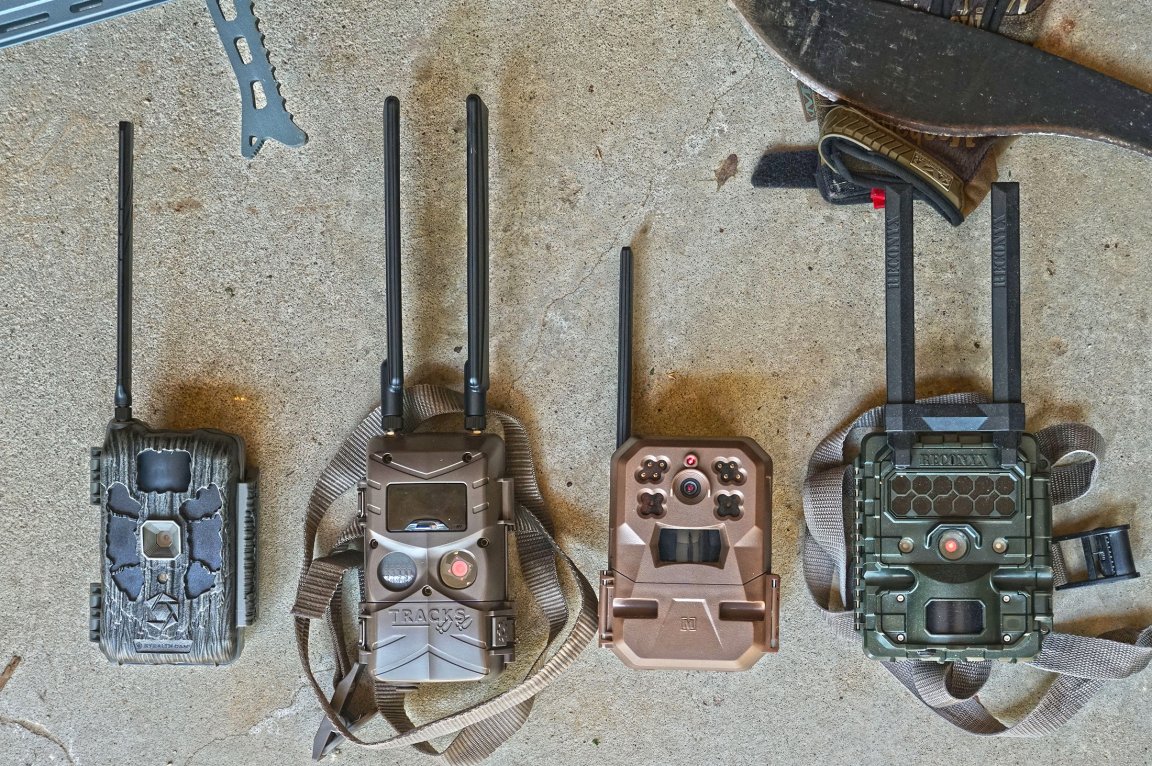We may earn revenue from the products available on this page and participate in affiliate programs. Learn More ›
You’ve finally got your trail camera set up in the spot. Every day or two it sends you a photo of a giant old buck, and now all you’ve got to do is wait for the right wind to sneak in there and hunt him. And then, all of a sudden, the camera goes dead.
It’s a new camera, the battery life seemed fine, cell reception was decent … What the hell? Welcome to the often frustrating world of modern trail camera use.
I’ve been field testing and running trail cameras year-round for several years now and in my experience, there is no camera brand out there that’s immune to malfunctions and failures. But my experience pales in comparison to that of Rich Howell of Trail Cam Pro. Howell has been objectively testing and experimenting with trail cameras for more than 20 years.
I recently interviewed Howell on the Outdoor Life podcast and he shared several reasons why hunters see so many camera failures in the field. Some of it has to do with how we’re using the cameras, and some of it has to do with how the cams are made (which is usually pretty cheaply). Plus, Howell hints at where he thinks the future of trail cameras is headed, and it’s all about making a system that is more affordable and useful to hunters. It’s a conversation worth listening to ahead of the heart of hunting season.
In the meantime, here’s why our cameras often go down in the field, and what we can do to fix them.
You’re Using the Wrong Batteries
Standard alkaline batteries often don’t have the required power to keep a trail camera running reliably, Howell says. If you’re getting fine daytime pictures, but blank, black images at night, it’s a good sign you have a battery issue as there’s not enough power for the camera to fire the flash. This can happen even when the camera is displaying decent battery life.
More expensive lithium batteries can work well, but they too can have issues. Howell noticed that about 1 in 20 lithium batteries would go bad very quickly, (like within days of use) and sometimes this was enough to prevent the camera from working.
Howell now suggests that hunters use rechargeable lithium batteries, which have proven to be more reliable. Having a pool of these batteries on rotation will help solve many trail camera power troubles.
You’re Not Optimizing Settings
When hunters first jump into the cellular trail camera game, they often like to get their photos sent immediately. In the beginning it’s fun to get a notification and then have that instant gratification of seeing a deer photo.
But it’s usually more effective to have a cell camera batch send images every 12 hours or 24 hours. This is a key way to preserve battery life, and it’s also a more useful way to analyze trail camera data.
Personally, I like to have cameras send every 24 hours and then I review all the cameras everyday in the morning. Looking at all the cameras on the property at once helps me put together activity trends.
You’re Relying on Solar Panels
Howell says that solar panels definitely can help keep your camera powered, but they often have issues in the field. First, you want to make sure that they are facing south to capture as most sun as possible. This can be a challenge if you want your camera facing north. And second, squirrels have a tendency to chew through solar panel wires. If you’re setting up your camera and panel in the hardwoods, there’s a good chance a squirrel is going to get to it. In other words, solar panels can be a useful tool, but they’re not a silver bullet.
You’re Not Using an Aftermarket Mount
If you’re using the stock camera strap, you’re just asking for trouble. The tag ends of these straps always seem to come loose (triggering the camera) and you’re never able to position the camera perfectly on the tree with them. Plus, other hunters can easily spot the strap, which is an important consideration if you’re hunting public land. Howell suggests using an adjustable tree mount to make sure you can position the camera exactly where it needs to go.
You can find a wealth of trail camera information on the Trail Cam Pro website and by subscribing to their newsletter.
